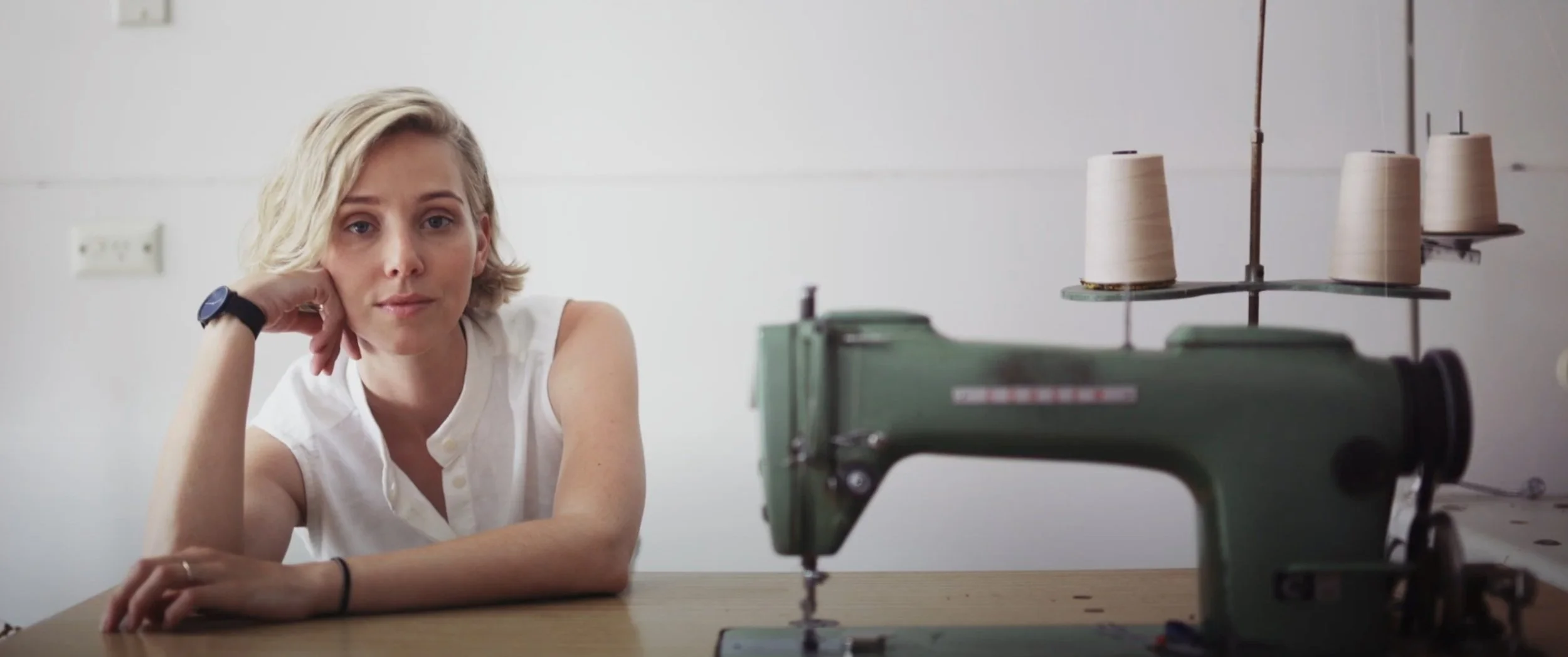A Circular Fashion Conversation With A.BCH’s Courtney Holm
Courtney Holm by Michelle Nace.
At the start of 2024, the founders of two of Australia’s most respected circular fashion labels announced they were closing their doors. Jade Sarita Arnott, founder and designer of leading ethical fashion label Arnsdorf, told of her decision via an Instagram post, saying the April 2024 closure of the brand was for personal reasons.
Courtney Holm of A.BCH broke the news on her brand’s website, writing that her decision to stop selling and making new clothes was more of a transition for A.BCH rather than the end.
Over the last decade, these two independently run fashion labels have flown the Australian flag for sustainable and circular fashion with both founders deeply passionate about the effect the fashion industry continues to have on the environment.
So what does it mean when pioneers in the space choose to shut their business, and what does it say about the future of circular fashion?
By Nikki Stefanoff
Getting clear about what circular fashion means
For those not familiar with the phrase, circular fashion is a model where the production of an item and the end of its life are considered equal in the design process.
This includes choosing sustainable materials and sometimes even designing new production methods to bring the garment to life. A circular design process also has to consider how the product can be repurposed into something else or biodegrade safely when it’s finished being worn.
When Holm set up A.BCH the primary goal was to prove that circular design and circular fashion were possible, making clothes that people wanted to buy came as a bonus.
“Now that we’re wrapping up the clothing side of things and I can take a step back, I can see that we weren’t meant to keep making clothes forever,” she says.
“A.BCH was more a proof of concept, it was a journey for us to take on behalf of others.”
Photo provided by Courtney Holm
The student becomes the master
Holm admits that the approach she’s taken with A.BCH could be seen as extreme and not for everyone. However, she’s still keen to pass on everything she’s learned, saying that people are free to take the bits they like and improve on the bits they don’t.
“I think we're lacking practical experience and practitioner knowledge in the circular economy space. It's all theoretical and academic but really lacking [in hearing from] the people who worked in the supply chain, the recyclers, the makers and the growers.
“I feel like there's such a missing perspective,” she says.
“I'm not all of those things but I have learned a lot and can contribute so I see myself becoming more of a guide or a consultant - being able to share my knowledge, especially when it comes to the practical side of things.”
Holm sees circular design as not just a framework but more of a detail-oriented focus that needs to happen throughout a brand’s design phase. It’s an approach to design that can often require a lot of change - and sometimes extra training - for a business. Which is what Holm is hoping to help with.
“It can be things like how to calibrate your machines properly to be able to handle bio-based threads rather than synthetic-based,” she explains. “It’s also learning how to build a product out with repair, repurposing or remanufacturing in mind or even understanding how to plan for different types of materials streams.”
Even circular fashion has a waste problem
Holm talks about purposefully choosing to use the term ‘material streams’ rather than the more standard ‘waste streams’, noting that all material should be seen as a precious resource.
There is a notorious issue with waste in the fashion industry and after deciding to close the product side of the A.BCH, tackling the problem head-on has been the inspiration behind her new venture, the online platform Circular Sourcing.
After recognising there wasn’t an existing system where materials weren’t either destroyed or stored in a warehouse for years before being sold off. And with brands and designers looking for good-quality material, Holm decided to create something to connect suppliers and designers with surplus fabric.
“Whether you're a brand, manufacturer or mill you've got surplus material,” she points out. “Creating a platform that brings [everyone] together in one place and makes it easy for people to buy and list materials just made sense.”
After receiving funding from Sustainability Victoria, Holm and her team designed an MVP platform and ran a pilot to test their thinking.
“It went well, people were really into it,” she says. “We’ve got some huge Australian brands interested and are in the process of doing a capital raise to scale up.
“It’s a really exciting new venture for us.”
Photo provided by Courtney Holm
Circular fashion: past, present and future thinking
As Holm gets ready to move into the next stage of A.BCH, she’s had some time to reflect on how, and if, the circular fashion space has shifted since she started in 2017.
“If you look at it from the perspective of how many materials we were buying seven years ago compared to how many we’re buying today, then [the industry] hasn’t got any better. It’s got worse,” she says.
“If you look at it from a policy basis, however, you can see that in the EU, parts of the US and the UK there are moves towards regulating the industry. Australia is doing the same through the Australian Fashion Council’s Seamless Stewardship Scheme.”
Holm believes the path to real change lies less with brands and designers and more with policy, legislation and getting everyone on the same page.
“If there are rules in place that everybody adheres to then it will be a lot a lot easier to move the needle,” she says. “It’s now more about seeing if we can move it in the right direction.”




